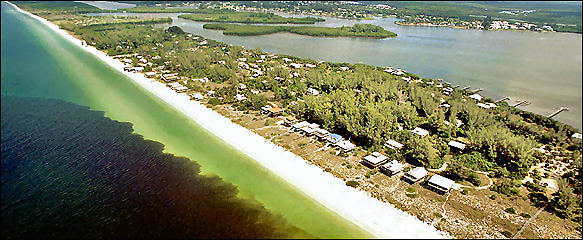-
Red Tide is a worldwide phenomenon
-
Red Tide is a microscopic algae
-
Red tide waters can be several colors
-
Red tide have airborne toxins that can cause respiratory irritation
-
Red tide can cause skin irritations
-
Not all discolored water is red tide
The dinoflagellate Karenia brevis, or K.brevis, which is the predominant red tide organism in the Gulf of Mexico

|
|
|
|
|
|
Red tide
|
|
The dinoflagellate Karenia brevis, or K.brevis, which is the predominant red tide organism in the Gulf of Mexico (and can also occur on the Atlantic side of the Florida coast) can kill fish in vast numbers, make shellfish poisonous to humans, and release toxic airborne irritants that drive coastal residents and tourists from beaches.
Off Florida, it seems to originate 10-50 miles offshore along Florida's continental shelf, in what have been termed "initiation zones." Since it initiates offshore in low nutrient water, the role of nutrients from pollutants is still a mystery. Some scientists think the Loop Current which brings Caribbean Sea water to Florida's west coast, may initiate a bloom. They speculate that there is an upwelling of nutrients produced as the current surges against the shelf, thus creating favorable growing conditions. The red tide is then transported into the nutrient-rich, shallow waters by winds and/or currents, where it continues to multiply to harmful levels. Much remains to be found out: the precise location of initiation zones, the cause of bloom initiation, what transports a bloom into shallow waters, what causes a bloom to die off, and the cycle of toxicity and the release of toxins during the bloom.
| |
|
 |
|
|
Red tide approaching southwest Florida Coast |
|
|
|
|
|
|
|
- The precise location of initiation zones.
- The cause of bloom initiation.
- What transports a bloom into shallow waters.
- What causes a bloom to die off.
- When are toxins produced, what amounts, and at what stage in its life cycle.
- When are toxins released (some say this occurs only when the cell dies but that is not proven)
|
|
|
|
|
|